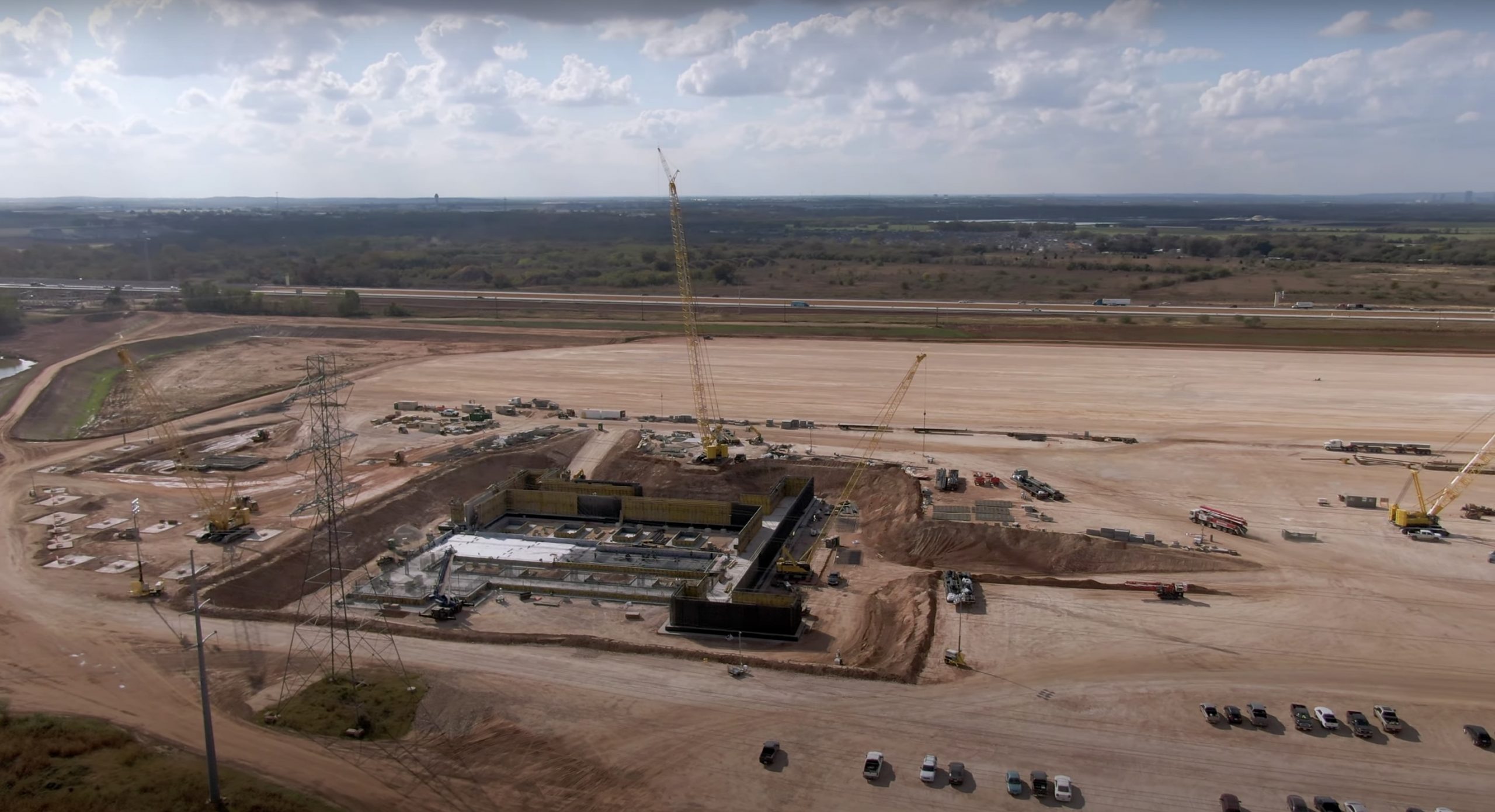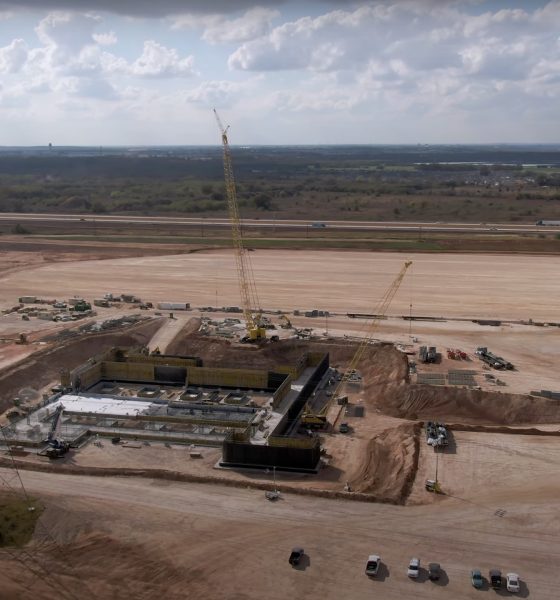

News
Tesla starts hiring ramp for Gigafactory Texas engineers, HR
Around the same time Giga Texas’ construction kicked off 24/7 shifts, Tesla started a hiring ramp for its Gigafactory in Austin. A local news report stated that the EV automaker is already looking for an HR manager for the upcoming Cybertruck factory. Tesla has also recently posted a couple new engineering jobs on its career page, all of which are located in Austin, Texas.
The Austin Business Journal published a job position for an experienced HR Manager for Tesla Giga Texas. The description for the job was very colorful and asked for a specific kind of individual for the position. “Check your ego at the door. We don’t allow them on the property,” it said.
“We care about people, growth, excellence and results. We tend to lose sleep over them as this is not easy. Bottom line, we are in search of real people that believe in and deliver the impossible every day. You must love and thrive in that fast paced, high energy chaotic environment.”
The responsibilities of Gigafactory Texas’s HR Manager included: “Making the impossible possible,” and “Love to be challenged, REALLY CHALLENGED!” The tone and diction of the job description spoke volumes about the kind of work environment Tesla will create for Giga Texas employees.
Besides an HR Manager, Tesla’s Careers page revealed that the company is looking for engineers to work at its Austin-based Gigafactory as well, particularly a Quality Engineer, Controls Engineer, and Manufacturing Equipment Engineer. Job posts for all three of the engineering positions were posted on November 13.
All three of the engineering jobs fall under the “Manufacturing” category, which may be quite telling. Teslarati previously reported that Giga Texas started working three shifts in an effort to accelerate the construction of it production facilities. During Tesla’s “Travis County Colorado River Project Partner Pre-Qualification Presentation,” the EV automaker estimated Giga Texas’s first dry-in would be December 30, 2020.
If it meets the set date for the dry-in, Tesla could start Cybertruck trial production sooner than expected, giving the company ample time to iron out all the kinks of the EV pickup truck’s manufacturing process. An HR Manager as well as engineers for quality, manufacturing equipment, and control would probably be needed during the vehicle’s trial production phase.
Based on the recent developments in Giga Texas, Tesla does seem to be maintaining its schedule for Cybertruck and Model Y production in Austin. If successful, Giga Texas could play a part in Tesla’s Q3 and Q4 numbers in 2021, most especially its production target for next year. For 2020, Tesla set a guidance of 500,000 vehicles, which the electric car manufacturer seems relatively confident it has a chance of meeting.
Tesla hasn’t formally set a production and delivery goal for 2021 yet, but it will definitely exceed its 500,000 guidance of 2020. Recently, Giga Shanghai’s 2021 goals were leaked and revealed Tesla China set a 550,000 guidance for 2021. If Giga Shanghai can produce half a million vehicles alone, Tesla’s production could easily double next year. Giga Texas’ Model Y and Cybertruck production could help Tesla produce 1 millions vehicles in one year, along with the Fremont Factory, Giga Shanghai, and Giga Berlin.

News
Tesla FSD fleet is nearing 7 billion total miles, including 2.5 billion city miles
As can be seen on Tesla’s official FSD webpage, vehicles equipped with the system have now navigated over 6.99 billion miles.

Tesla’s Full Self-Driving (Supervised) fleet is closing in on almost 7 billion total miles driven, as per data posted by the company on its official FSD webpage.
These figures hint at the massive scale of data fueling Tesla’s rapid FSD improvements, which have been quite notable as of late.
FSD mileage milestones
As can be seen on Tesla’s official FSD webpage, vehicles equipped with the system have now navigated over 6.99 billion miles. Tesla owner and avid FSD tester Whole Mars Catalog also shared a screenshot indicating that from the nearly 7 billion miles traveled by the FSD fleet, more than 2.5 billion miles were driven inside cities.
City miles are particularly valuable for complex urban scenarios like unprotected turns, pedestrian interactions, and traffic lights. This is also the difference-maker for FSD, as only complex solutions, such as Waymo’s self-driving taxis, operate similarly on inner-city streets. And even then, incidents such as the San Francisco blackouts have proven challenging for sensor-rich vehicles like Waymos.
Tesla’s data edge
Tesla has a number of advantages in the autonomous vehicle sector, one of which is the size of its fleet and the number of vehicles training FSD on real-world roads. Tesla’s nearly 7 billion FSD miles then allow the company to roll out updates that make its vehicles behave like they are being driven by experienced drivers, even if they are operating on their own.
So notable are Tesla’s improvements to FSD that NVIDIA Director of Robotics Jim Fan, after experiencing FSD v14, noted that the system is the first AI that passes what he described as a “Physical Turing Test.”
“Despite knowing exactly how robot learning works, I still find it magical watching the steering wheel turn by itself. First it feels surreal, next it becomes routine. Then, like the smartphone, taking it away actively hurts. This is how humanity gets rewired and glued to god-like technologies,” Fan wrote in a post on X.
News
Tesla starts showing how FSD will change lives in Europe
Local officials tested the system on narrow country roads and were impressed by FSD’s smooth, human-like driving, with some calling the service a game-changer for everyday life in areas that are far from urban centers.

Tesla has launched Europe’s first public shuttle service using Full Self-Driving (Supervised) in the rural Eifelkreis Bitburg-Prüm region of Germany, demonstrating how the technology can restore independence and mobility for people who struggle with limited transport options.
Local officials tested the system on narrow country roads and were impressed by FSD’s smooth, human-like driving, with some calling the service a game-changer for everyday life in areas that are far from urban centers.
Officials see real impact on rural residents
Arzfeld Mayor Johannes Kuhl and District Administrator Andreas Kruppert personally tested the Tesla shuttle service. This allowed them to see just how well FSD navigated winding lanes and rural roads confidently. Kruppert said, “Autonomous driving sounds like science fiction to many, but we simply see here that it works totally well in rural regions too.” Kuhl, for his part, also noted that FSD “feels like a very experienced driver.”
The pilot complements the area’s “Citizen Bus” program, which provides on-demand rides for elderly residents who can no longer drive themselves. Tesla Europe shared a video of a demonstration of the service, highlighting how FSD gives people their freedom back, even in places where public transport is not as prevalent.
What the Ministry for Economic Affairs and Transport says
Rhineland-Palatinate’s Minister Daniela Schmitt supported the project, praising the collaboration that made this “first of its kind in Europe” possible. As per the ministry, the rural rollout for the service shows FSD’s potential beyond major cities, and it delivers tangible benefits like grocery runs, doctor visits, and social connections for isolated residents.
“Reliable and flexible mobility is especially vital in rural areas. With the launch of a shuttle service using self-driving vehicles (FSD supervised) by Tesla in the Eifelkreis Bitburg-Prüm, an innovative pilot project is now getting underway that complements local community bus services. It is the first project of its kind in Europe.
“The result is a real gain for rural mobility: greater accessibility, more flexibility and tangible benefits for everyday life. A strong signal for innovation, cooperation and future-oriented mobility beyond urban centers,” the ministry wrote in a LinkedIn post.
News
Tesla China quietly posts Robotaxi-related job listing
Tesla China is currently seeking a Low Voltage Electrical Engineer to work on circuit board design for the company’s autonomous vehicles.

Tesla has posted a new job listing in Shanghai explicitly tied to its Robotaxi program, fueling speculation that the company is preparing to launch its dedicated autonomous ride-hailing service in China.
As noted in the listing, Tesla China is currently seeking a Low Voltage Electrical Engineer to work on circuit board design for the company’s autonomous vehicles.
Robotaxi-specific role
The listing, which was shared on social media platform X by industry watcher @tslaming, suggested that Tesla China is looking to fill the role urgently. The job listing itself specifically mentions that the person hired for the role will be working on the Low Voltage Hardware team, which would design the circuit boards that would serve as the nervous system of the Robotaxi.
Key tasks for the role, as indicated in the job listing, include collaboration with PCB layout, firmware, mechanical, program management, and validation teams, among other responsibilities. The role is based in Shanghai.
China Robotaxi launch
China represents a massive potential market for robotaxis, with its dense urban centers and supportive policies in select cities. Tesla has limited permission to roll out FSD in the country, though despite this, its vehicles have been hailed as among the best in the market when it comes to autonomous features. So far, at least, it appears that China supports Tesla’s FSD and Robotaxi rollout.
This was hinted at in November, when Tesla brought the Cybercab to the 8th China International Import Expo (CIIE) in Shanghai, marking the first time that the autonomous two-seater was brought to the Asia-Pacific region. The vehicle, despite not having a release date in China, received a significant amount of interest among the event’s attendees.








